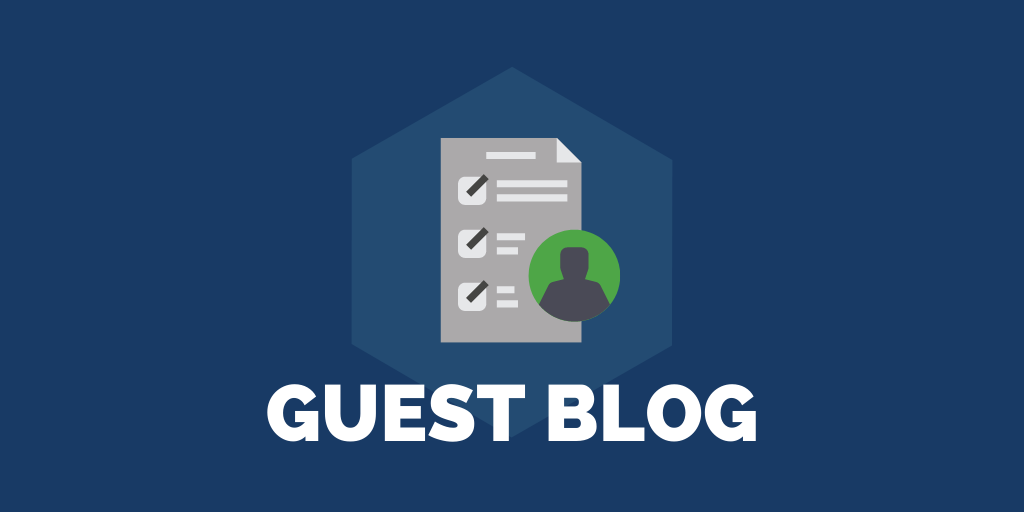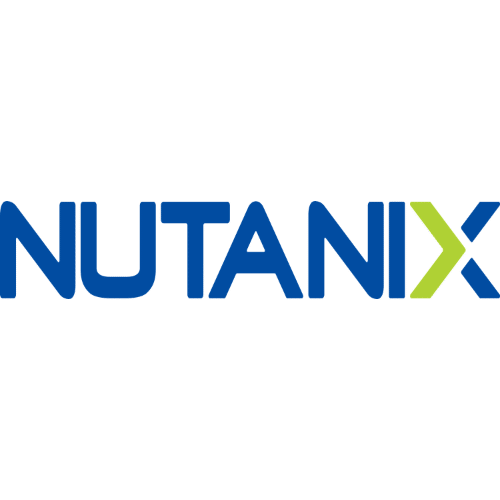Nutanix Guest Blog: Calm 3.0 is Here!
Guest blog alert! We’re excited to have our partner, Nutanix, joining us in the blogosphere today to talk about their “Nutanix Calm Demo”. Dave Keefe, Sr. Cloud Automation Engineer at Nutanix will be performing the demonstration.
“Nutanix software unifies private, public, and distributed clouds, and empowers IT to deliver applications and data that power their businesses.”
Nutanix is thrilled to announce the release of Nutanix Calm 3.0, which includes an array of new features and functionality. You can see the full list of updates here, but we wanted to share a few highlights below.
Nutanix Calm, as you likely know, provides self-service VM and application lifecycle management, monitoring, and standardization for developers and operations teams. Since its launch, customers have used Calm to select, provision, and manage IaaS VMs, as well as business applications across private and public clouds.
Runbooks
Newly added in 3.0, Calm Runbooks helps orchestrate automation tasks across infrastructure and applications in a hybrid cloud infrastructure. Runbooks provides users an easily scalable way to orchestrate tasks outside the lifecycle management already enabled by Calm blueprints.
Runbooks can be triggered both manually by end-users, based on role-based access, or hooked up via REST APIs to monitoring and service-desk tools for automated execution.
Example Use Case: Upgrade or Patch Management
Previously, tasks such as patching a critical vulnerability across hundreds of database instances was hard to do via blueprints, as you would have to patch each instance of the application. Runbooks simplify life cycle management across hundreds of application instances, or shared resources, which cut across the application layer and apply to multiple groups of infrastructure components.
A Runbook is a collection of orchestration tasks defining “What to do” and “Where to do it.” We support shell/powershell commands, variables, HTTP requests, delay, loops, and decision tasks, among other existing Calm constructs.
By their very nature, Runbooks are agnostic to the application grouping, and use an endpoint such as a hostname or IP address and port, or a URL, to run against. To make them truly versatile, Runbook tasks can run on VMs, applications, and categories. Furthermore, to get you started, we pre-seed a task library with over 200 ready-to-use tasks. 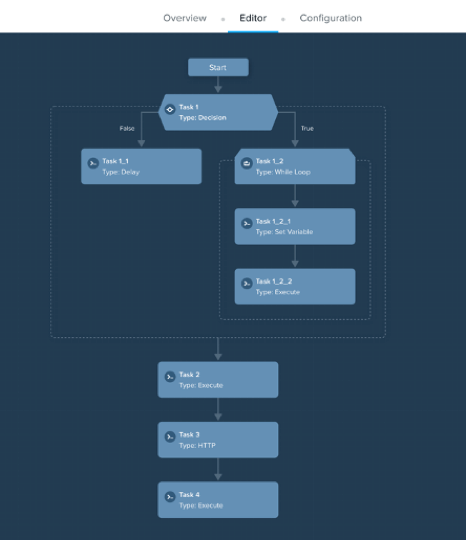
Fig 1. Example of a Calm Runbook
Domain Specific Language (DSL) for Infrastructure-as-Code (IaC)
For DevOps teams who want to provision Infrastructure as Code (IaC) or Applications as Code (AaC), Calm 3.0 now supports Python-based Domain Specific Language (DSL) for writing Calm blueprints-as-code. DSL offers all the richness of the Calm UI, but with the additional benefit of being human readable, with version controllable code that can handle even the most complex application scenario.
For example, entities like Services, Packages, Substrates, Deployments, and Application Profiles, which form the building blocks of a blueprint, can be defined as Python classes. Users can specify their attributes as class attributes, and neatly define actions on those entities (procedural runbooks) as class methods. Calm DSL can also accept native data formats such as YAML and JSON, allowing reuse into the larger application lifecycle context of a Calm blueprint. 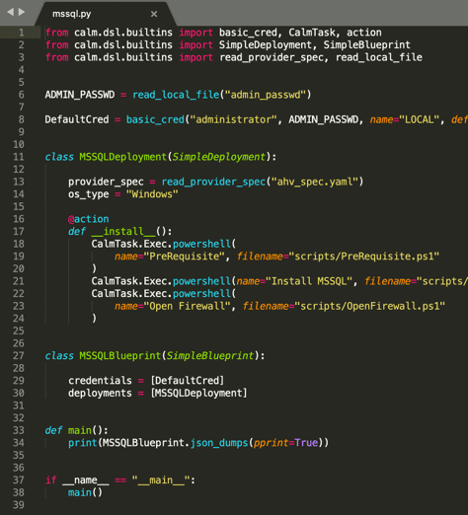
Fig 2. Example of a Calm DSL
The DSL also allows customers to leverage all their existing versioning, CI-CD, and testing tools with the blueprint DSL. Best of all, the DSL is open source and available on Nutanix Github. You can learn more about Calm DSL installation and examples here.
Xi as a Provider
At Nutanix, we have always supported our customer’s freedom of choice, from hypervisors, to hardware, to clouds. Calm blueprints can be used to deploy applications and services on popular public clouds, such as AWS, Azure and GCP. Calm decouples applications from their underlying infrastructure and harmonizes operations across cloud environments. With Calm 3.0, we have added Nutanix Xi Cloud to the list of supported cloud providers. 
Fig 3. Locations of Xi Cloud DCs around the globe, as of June 2020
To add Nutanix Xi as a cloud endpoint for application deployment, Xi Cloud must be paired with Prism Central on-premises.
Finally, Calm 3.0 also delivers strengthened integration with ServiceNow, via the latest Calm plugin. Customers can now automate their app lifecycles, including upgrades, patches, expansions, and more, while taking advantage of the approval flow and audit capabilities of ServiceNow.
In conclusion, the new features of Calm 3.0 represent another important step on our automation and orchestration journey. The full list of features in this release can be viewed here.
If you’re ready to learn more about Nutanix Calm, please send us a note at info@nutanix.com and we’ll be happy to answer any of your questions. You can also contact IE directly at info@ineteng.com. In the meantime, you can always take a guided Test Drive to experience first hand Calm’s elegant and powerful simplicity.
